This post may contain affiliate links. Please read our disclosure policy.
This homemade pita bread recipe yields a super-soft, puffed pita bread that is actually easy to make, easier than you might think! Yogurt in the dough is the secret to soft, beautiful pita.
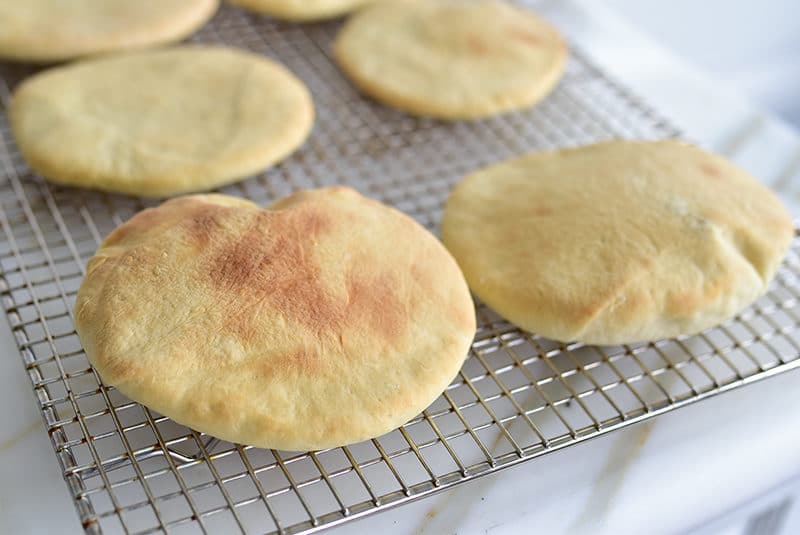
In the house of Abood, and in the houses of grandparents Abood and Abowd, there was a lot of baking. A lot. But none of it included pita bread. I suspect this was in part because we could enjoy perfect, thin, store bought pita bread from nearby bakeries without a thought; this is mid-Michigan, my friends, and while we may have our drawbacks, we’re rich in Middle Eastern bakeries and restaurants.
The first time or two I made pita bread, it was a disaster zone. Then some time back, I found my way into Molly Yeh’s Short Stack book on yogurt. The last, very very last thing I expected to find in Molly’s yogurt book was a pita bread recipe. But there it jumped out, and it includes, of course: yogurt. “Yogurt Pita.” The pita bread recipe description was so simple and inviting (all about the soft dough and the soft pockets it results in) that it made me wait not another day to bake my first round.
The results are pillowy soft pita, made with such ease and such beautiful results you will wonder why you don’t make pita on a regular basis.
Here’s all of the info and tips you need for how to make homemade pita bread with ease.
Table of Contents
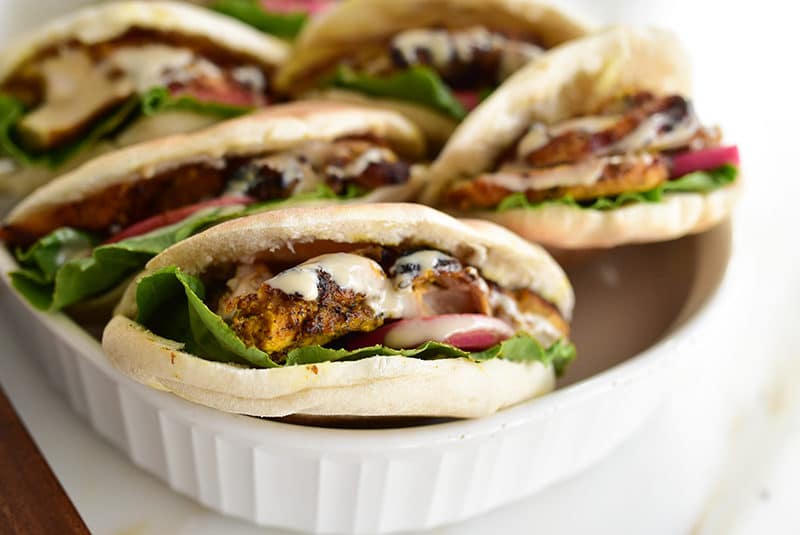
What to eat pita bread with?
Everything, but especially homemade hummus, Lebanese baba ganoush, Chicken shawarma, homemade beef shawarma, Lebanese Garlic Sauce, Toum, Shish Tawook, Lebanese Grilled Chicken Skewers, falafel, and homemade pita chips (can use older bread). This pita bread recipe requires simple ingredients you probably already have on hand.
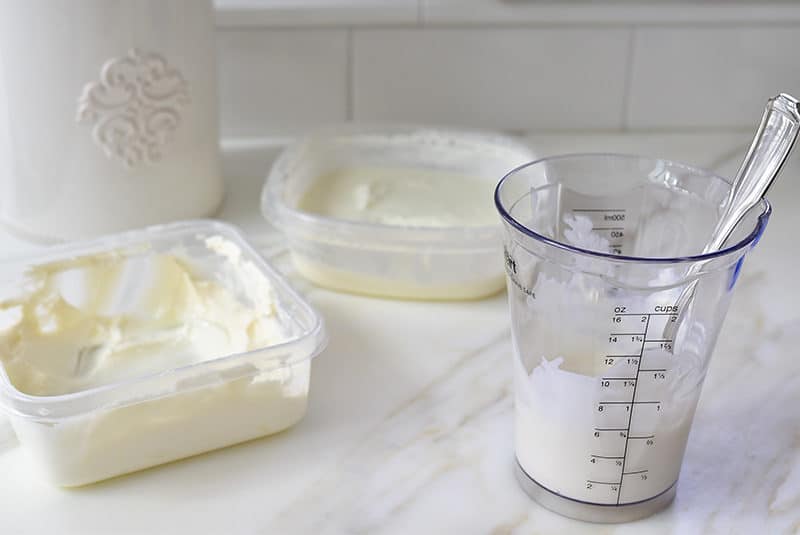
Ingredients for soft pita bread
Water. Lukewarm water, 105-115 degrees for best results.
Active dry yeast. You can substitute instant yeast for active dry yeast 1:1 if that’s what you have on hand. Both can be found in standard grocery stores.
Granulated sugar. Just a little bit!
Bread flour. I recommend using bread flour. Whole wheat flour might result in denser bread, but is a good high-protein substitute if necessary. Bread flour is preferable to all-purpose flour because of its higher gluten structure. Regardless of flour type, save some for dusting.
Kosher salt. The savory touch you need for homemade bread!
Olive oil. This goes in the recipe but make sure you have enough extra virgin olive oil for the dough and extra for coating a large mixing bowl. I’m a huge fan of Lebanese EVOO.
Greek yogurt or Labneh. This luscious ingredient is key for creating fluffy, soft pita pockets.
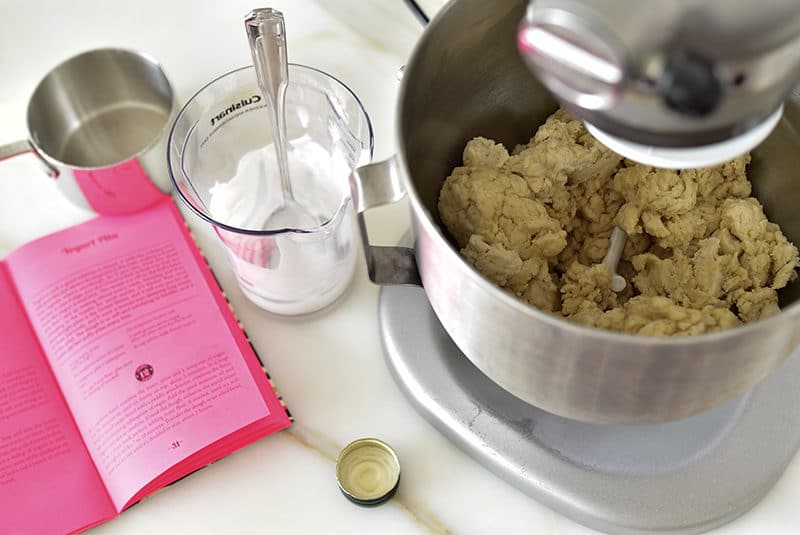
How to make pita bread
How to make pita dough
Step 1: Combine water, yeast, and 1 teaspoon of sugar. Let this yeast mixture sit for 2-3 minutes.
Step 2: In a large bowl or bowl of a stand mixer fitted with the dough hook attachment, combine the flour, salt, and remaining sugar. Add the yeast mixture, oil, and yogurt. Mix to combine on low speed. Knead the pita bread dough in the mixer, or by hand on a lightly floured surface, adding more flour if needed, until the dough is soft and sticky, 7-10 minutes.
Step 3: Transfer the dough ball to an oiled bowl, cover the bowl with plastic wrap or a clean kitchen towel (not touching the dough), and let the dough rise in a warm place until it’s doubled in size, about 2 hours.
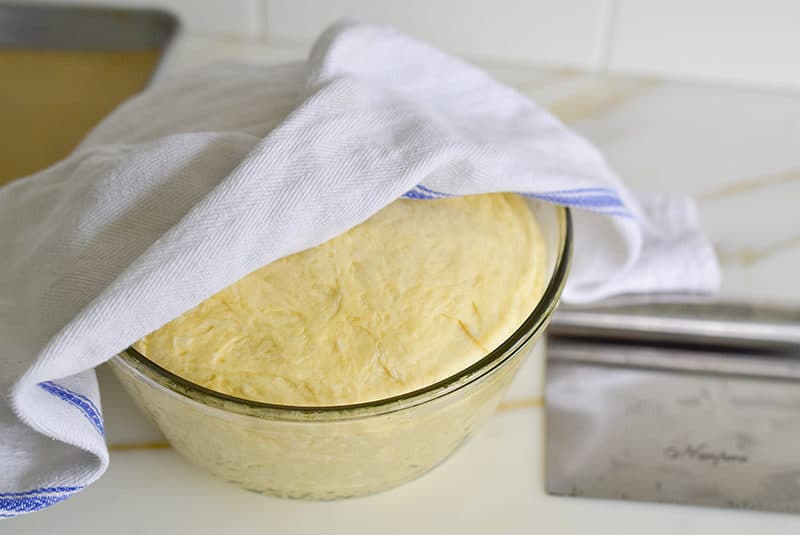
Step 4: Turn the dough out onto a clean work surface and divide it into 12 equal pieces. Cover and let the dough rest for an additional 20 minutes.
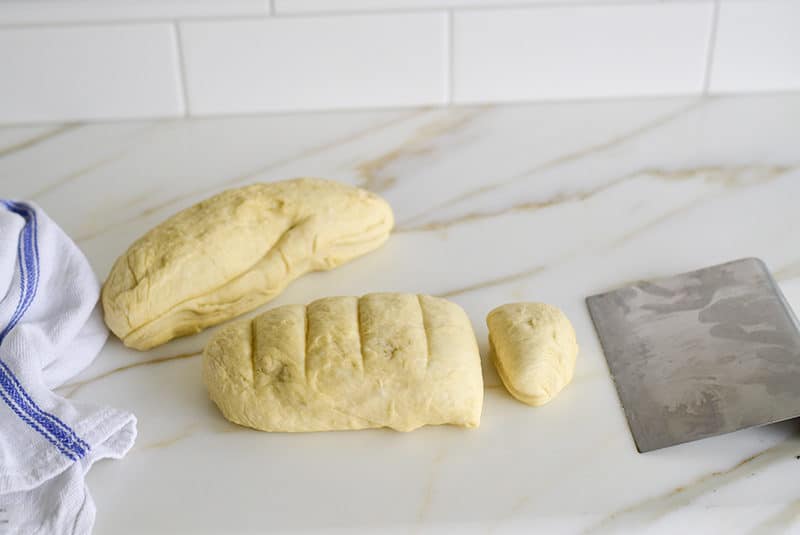
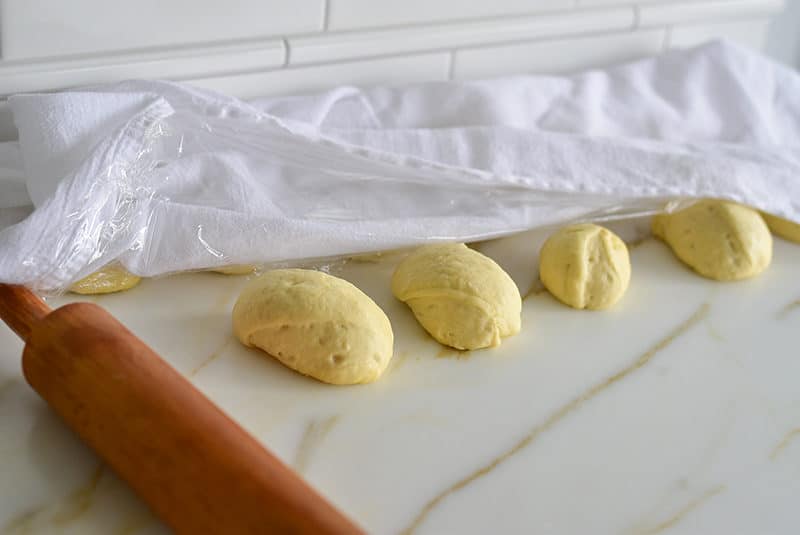
In the stand mixer:
Use the bowl of a stand mixer fitted with the hook attachment to combine.
By hand:
Knead the dough by hand on a lightly floured, clean work surface. If your hands get too sticky with flour and dough, rub them vigorously together (over a trash bin is helpful!).
How to shape pita
Roll each of the 12 dough balls out into a round shape, 1/4- to 1/2-inch thick. You can use a rolling pin to make this easier, and a kitchen scale if you want the dough circles to be of exactly equal weight.
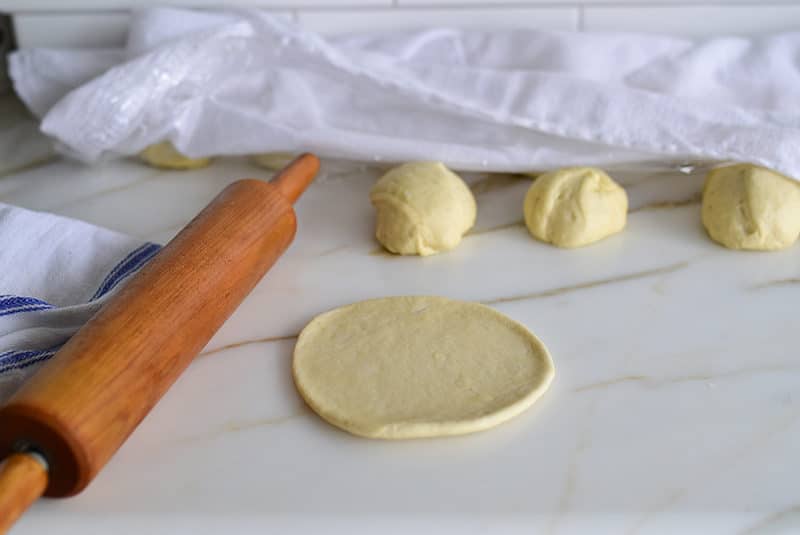
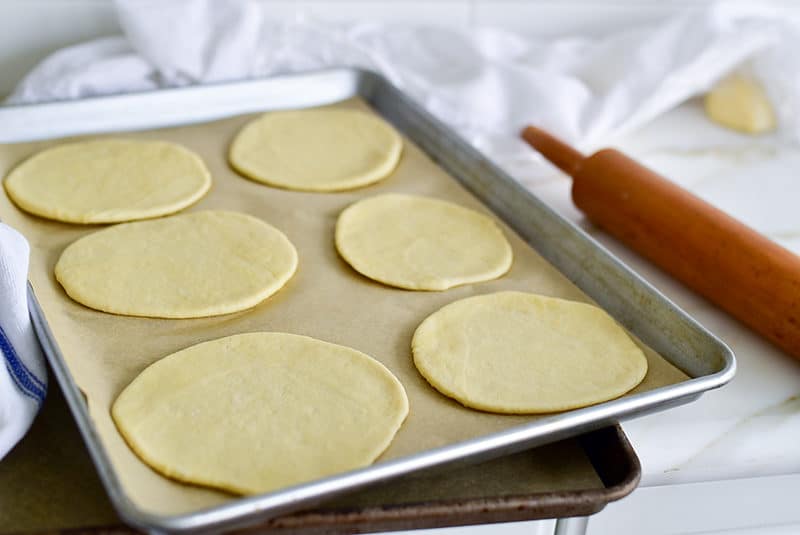
How to bake pita
Preheat the oven to 500°F, and line two baking sheets with parchment paper.
Place each piece of dough on a baking sheet an inch apart, and bake in the hot oven until they’re puffy and golden brown on top (begin checking for doneness at 5 minutes). So fun!
Transfer the pitas to a wire oven rack to cool.

Helpful Tips
- Don’t overproof the dough! This means keeping an eye on the dough as it doubles in bulk. Over-proofed dough deflates and loses its loft.
- Bake one sheet at a time. Don’t place two sheet pans in the oven at once. Each sheet pan needs all of the space around it and full access to the heat as it bakes.
- Rotate the pan as it bakes to help create perfect pockets.
Storing Leftover Homemade Pita
- Keep the pita soft by covering it completely with a towel after baking, then store the pita in an airtight container or ziplock bag with the air removed before sealing.
- How long does pita last in the fridge? It lasts for up to one week. If you want to store them longer, I highly recommend freezing them instead.
- Leftover pita bread freezes so perfectly! Pull out all or one pita at a time and thaw in the fridge or at room temperature. Keep it in a plastic bag or it will dry out quickly. For a quick thaw: wrap in foil and warm on the bottom rack of a low-temperature oven.
Make Ahead Instructions
If you want, you can make the pita dough ahead of time and bake it another day. After letting the dough rise, put it in an airtight container and store it in the refrigerator for up to 3 days. This way, you can have fresh homemade pita bread in a snap!
Frequently Asked Questions
Kmaj or kimaj. Bread in general is called kubiz or kubz. Also known as kubz arabi.
Yes, pita is one version Arabic bread. There are several other Middle East breads to bake and enjoy as well, such as Za’atar Flatbread.
Pita bread sometimes has fewer calories than standard white bread, making it a healthier option for anyone looking to make a calorie-conscious choice.
This bread is versatile in the baking, as long as the oven is hot and the dough properly rolled out. You can bake your own pita bread on a hot skillet, preferably a large cast iron skillet, for stovetop cooking, or on a pizza stone.
No! Perhaps the best part about pita is you can make it ahead and freeze it, then thaw to use whenever you want.
No! You can easily make this bread by kneading it by hand. A wooden spoon to mix and then a rolling pin are helpful tools.
Sometimes the pita doesn’t puff up if the baking sheet isn’t rotated during cook time. But don’t worry, you’ll still get a pocket inside!
Naan is an Indian bread that is thicker than pita, more often eaten on its own. Pita puffs are leaner than naan, and can be stuffed or dipped in just about anything. Try dipping them in some hummus or my whipped feta dip!
Greek pita bread doesn’t have a pocket in the center, whereas regular pita bread, including this homemade pita bread recipe, does have a pocket.
Yes, there are recipes for pita using standard gluten-free flour or other gluten-free flour such as chickpea flour. I have not tested gluten-free pita (yet!) so if you make it, please share with us how it goes!
More Bread Recipes to Try
- Make your own pita chips from your own (or store-bought) pita bread using my pita chips recipe!
- If you love a light, airy, and chewy loaf of bread, try my garlic butter glazed talami bread. The garlic butter truly deserves a chef’s kiss!
- Sfeha flatbreads are Lebanese flatbreads topped with a deliciously seasoned meat mixture.
- This za’atar swirl bread is not only delicious but also beautiful and impressive!
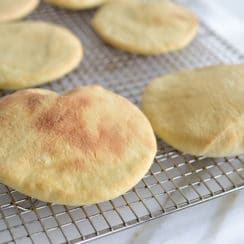
Homemade Pita Bread Recipe
Ingredients
- 3/4 cup warm water (105-110 degrees)
- 2 1/4 teaspoons or 1 packet active dry yeast
- 1 teaspoon plus 1 tablespoon granulated sugar
- 3 3/4 cups bread flour, plus more for dusting (if needed)
- 1 1/2 teaspoons kosher salt
- 3 tablespoons extra virgin olive oil, plus more for the bowl
- 3/4 cup whole-milk Greek yogurt or labneh
Instructions
- In a medium bowl, combine the water, yeast, and 1 teaspoon of the sugar. Let the mixture sit until it’s foamy on top, about 5 minutes.
- In a large bowl or stand mixer fitted with the hook attachment, combine the flour, salt, and remaining tablespoon of sugar. Add the water-yeast mixture, oil, and yogurt and mix to combine. Knead the dough either in the mixer or by hand on a clean work surface, adding more flour if needed, until the dough is soft and slightly sticky, 7-10 minutes.
- Transfer the dough to an oiled bowl, cover with plastic (not touching the dough), and let the dough rise in a warm spot until it’s doubled in size, about 2 hours.
- Preheat the oven to 500 degrees, and line two baking sheets with parchment paper. Turn the dough out onto a clean work surface and divide it into 12 equal balls. Cover and let rise an additional 20 minutes.
- Roll the balls out into circles that are 1/4- to 1/2-inch thick. Place them on the baking sheets an inch apart, then bake until they’re puffy and lightly browned on top (begin checking for doneness at 5 minutes).
- Transfer the pitas to a wire rack to cool. Enjoy!
Notes
Nutrition
Nutrition information is automatically calculated, so should only be used as an approximation.
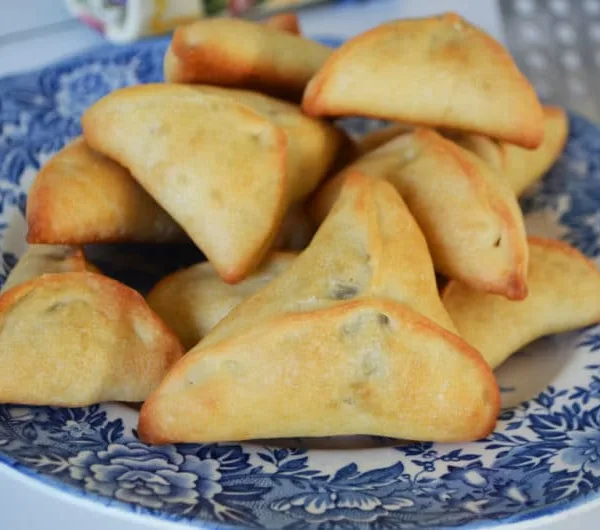
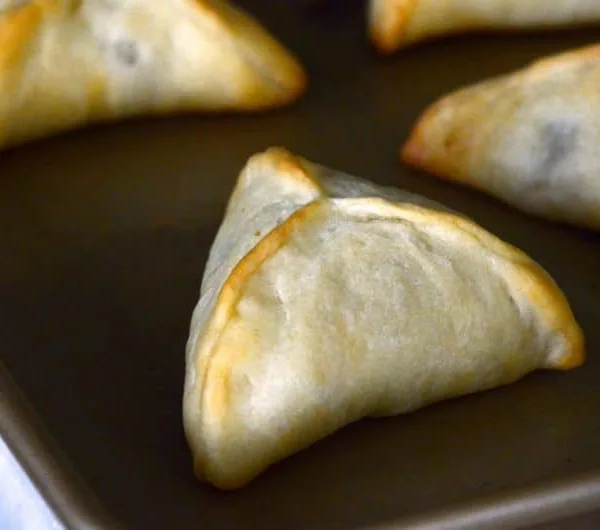
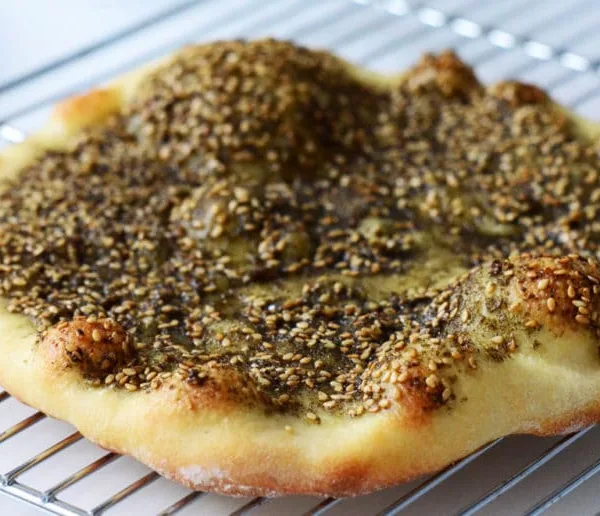
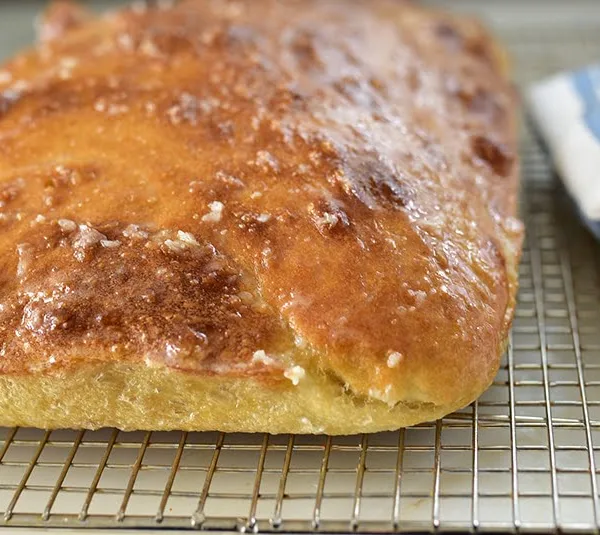







I’m making this recipe for the first time right now! I heard you talk about this recipe on The Splendid Table podcast recently and I had to try! I’m wondering about refrigerating the dough after its initial 2-hour rise. Should I leave it in one mass in the bowl or would it be better to form the 12 dough balls then refrigerate? Once I take it out of the fridge, should I let it come to room temp before rolling and baking? Any idea on how long that would be? Any tips would be most appreciated!
Hi Anzley, thank you! If you want to chill the dough to extend the rise time, do it for the first rise (“bulk rise”). Then divide it into balls and allow the second rise at warm room temperature. It will take at least a couple of hours to get the chill off and allow the dough to warm enough to rise again.
How much water with flour mix
Can I make the pita recipe with labneh if I use all purpose flour
You can use ap flour but the texture of the bread will be a little different. The recipe here was tested using bread flour.
Hi, did prepare pita using thus recipe and iliked it. Can u also just cook the bread on a pan over the stove?
Great Caroline! Interesting idea, kind of like baking on a saj dome oven. I wonder if it would puff without all of the heat of the oven that forces the puff action. I’ll try it next time and see!
Hi! Thank you for your recipes. I made your pita, and I thought I was following the recipe exactly, but I didn’t get a good rise. I still baked them off, but they were more like naan than pita (no pocket 🙁 ) Any suggestions for me to ensure a good fluffy rise?
Ashleigh, I’m sorry and surprised your pita didn’t puff! I wonder if in the rolling there was too much and too thin. Try rolling them a little smaller next time and see if that helps puff!
I get very inspired from your photography. I appreciate all you share on your website as it gives me such a great understanding of the Lebanese culture and foods. Thank you for sharing. Donna
Donna how kind, thanks so much.
I grew up just calling it Syrian bread. Honestly, my Mother’s family didn’t even decide they were Lebanese until Danny Thomas did so years ago. I’ve since learned the difference in the different kinds. Quickly learned that the store bought stuff was crap. I finally learned how to make our own. My daughter is wanting me to send some to her cross country lol.
So funny!!! Julie it’s really a treasure these breads homemade. Lucky daughter of yours!
My mother had a large flat piece of cast iron in the oven and would slide the rounds of dough directly onto the heated cast iron. She had huge wooden paddles for that job, that i believe were made by my giddo. I seem to remember she would run the loaves briefly under the broiler after they puffed up.The paddles now reside in one of her grandchildren’s kitchen. The kitchen counter would be piled high with her delicious bread. I can appreciate now what a huge job that was every week to feed her large family.
We called it khubz arabi (spelling?) or Syrian bread.
I have played with a dough using buttermilk that works well. I guess that worked along the same lines as yogurt.
Virginia what a legacy to love. We call flat thin bread Syrian bread; same with you, or are you saying you call the pita bread Syrian bread? Interesting about the buttermilk!!
Maureen, I’m just now seeing your reply, *3 years later! As I remember(and that’s getting harder to do with every passing year), we called pita Syrian bread, or sometimes Khubz Arabe. I imagine the region in Lebanon families were from may have something to do with food names.
*I came back to get this recipe again, because I did make it and really liked the results. Different from the basic dough my mother used, but good. I used it to make lamb Lamajun (spelling?). It was hard not to eat all of them in one sitting. That’s the problem with Lebanese food, isn’t it?
Thanks so much Virginia, and hello again!
Hi can I use the pita bread recipe without the yogurt or does some other adjust need to be make? If you can please let me know I would appreciate it thanks
Fred, the yogurt provides elasticity and tenderness to the pita. If you are looking to be dairy-free, you can leave it out but you’ll want to increase the liquid to replace what is lost by not using the yogurt.
Interesting that we always called this pita and thick bread khubiz. And we never added sugar! This is an easy looking recipe and I’ll try it with sugar…. Thanks for sharing another one of your fabulous recipes!
Interesting Louise! The sugar is just a small amount that helps the yeast develop and also lends to browning.
Can this recipe be made with AP flour ?, as that was all my mother used to make all of the Ageen dishes. Gold Medal. The pocket bread , made at home, was always called Syrian bread & the thicker bread, like at Olga’s was pita. The story was that pocket bread originated in Aleppo, Syria generations ago.
Jacob, that was all my Sitto used too. The bread flour is used for a softer texture, but certainly all-purpose flour will work. I have not tried it specifically with the ratios in this recipe, so you may need to tweak.
Love your site ! Would this dough work well for spinach and meat pies .
Thank you Marie! My recipe for fatayar dough (which is here) is much different because I like a thinner fatayar dough, and my recipe is designed to help keep the pinched seams of fatayar closed. So, you can give this a whirl knowing that it may prove more challenging with regard to keeping the fatayar closed.
I can’t wait to try these. For whatever reason, I’ve had bad luck getting fresh pita bread at the store. We’re trying to make all our own bread these day, so this will definitely increase the repertoire. Also, recently I had received pita oven order that I placed last week from spinning grillers.
Hi Chris–your oven and grill products look very interesting! Hope you enjoy this pita recipe; it’s a great one.
What can you tell me about rose water, which you use in your rhubarb rose jam? or is it rose extract? I have some Star Kay White Rose Extract, Would that fit the bill? Thanks. – CMS White Bear Lake, MN
The rose water is different in flavor than the extract. I’m not a fan of extract, as it is alcohol-based and not the soft rose flavor we love in rose water. Great question.
my mother made Lebanese bread when I was growing up she used a saj over wood fire it was not pitta it was more like mountain bread flat my family used to call it the Sydney morning herald as it was as big as the newspaper pages. growing up you could not buy the Lebanese bread that is why my mum made it. when mum cooked once a week all our Australian neighbours would come and visit as they could smell the yummy bread and my mum will give them some. a big plastic bin would be filled with yummy bread. 100% better than pitta bread. my mum no longer makes the bread but it was the best bread I ever tasted.
That is just such a great memory and story, Anne, thank you! Sounds just like the bread my sitto made. Heaven!
My mother’s aunt Alice had a wood fried beehive oven in her summer kitchen and I remember sitting around watching her make big stacks of them while we waited for our feast to begin.
That is a real treasure of a memory!
Maureen, I am so happy to have found your website. I love making Lebanese food. My dad was Lebanese my mom Scottish my grandparents came to Ellis Island in 1899 and settled in Waterville Maine. I’m looking forward to making your spinach fataya that’s one thing I have never tackled. I’m the Raw Kibbee maker in my family as well as the cooked, grape leaves, cabbage rolls, hummus Etc I now have my husband making it and he is of Russian descent he does as great a job as I do if not better. Waterville has the only Maronite Church in the state of Maine and my father was a deacon there until his passing 3 years ago at the age of 91. Can’t wait to buy your cookbook.
Now that is so very special Laurie!! I love your story. You are making so many great Lebanese dishes for your family. What a gem of a man your father must have been!
I lived in Fairfield and went to the Lebanese bakery in Waterville. I believe my mother knows your family. Do you know any Shibleys?
I know my mother spoke of the Shibleys! Wow, it’s been a long time. I’m not sure now what the connection was but I sure do remember that name. She was Maryalice Abowd Abood.
Dear Maureen- can’t wait to try this! My Sito had a wood fired oven in her basement and on the day she died at 79, she had just finished baking a 10lb bag of flour into khubiz (we didn’t even know that ‘pita’ was a word!), went upstairs to rest and passed away. My Mom and I make ours on a super hot pizza stone and my kids just wait by the oven and eat them as fast as they come out! There are never any leftovers….lol!
That is so touching Georgia. I was just recounting to Dan the other day that my dad’s mom died in the kitchen, after coring bushels of koosa. Bless them all.
How much water with flour mix
Hi Reyan–just the water that is with the yeast, 3/4 cup. I’ve updated the recipe to clarify this! Thanks!
Thank you.
I have the same memory…my great aunt made pita in her beehive oven and we all watched and waited for the feast to begin.
Beautiful!!!
You don’t heat the baking pans in the oven first before placing the dough rounds in the pan?
I know! You can still do that though if you like, to ensure ballooning.
My Mother-In-Law was from Bethlehem, Palestine and she always made her own pita. She would go to the town oven with her dough and wait with other women for her turn to bake her pita. I never had a chance to eat it but my husband always told me how “absolutely delicious” it was. I want to try your recipe. I also want my girls to have this recipe. Thanks for sharing it!
MARY
Mary that’s special! You’ll have to share photos with us on FB or Instagram when you do it!
We never used the term “pita” unless we were referring to the Greek bread that is not pocket bread–it is pita. We always said “khubz”.
Okay then, good to know, thank you Geoff!
Ok Maureen this may be the recipe that allows me to overcome my doughphobia complex!!!
Pita perfection
You’ve got to! You’re such a phenomenal cook that this will be nothing but great for you!
My mother in law used to have a wood stove down in her basement and it was always so fun to help her make pita bread. She used to fire the stove up to 700 degrees. She would, also make manushi. I used to bake pita in a conventional oven and would place a pizza stone in the oven to get it as hot as possible and then used a peel to take it out of the oven. Great memories!